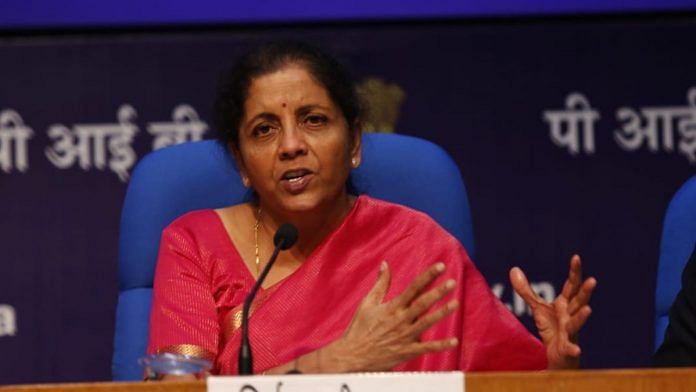India is belatedly acknowledging that something’s gone wrong with what was once billed as the world’s fastest-growing economy. That’s the good news. The bad news is that New Delhi still doesn’t have a cohesive strategy to reverse the slowdown.
Finance Minister Nirmala Sitharaman did offer a stimulus package on Friday. The highlight was the rollback of a tax surcharge on overseas investors that she herself had imposed in July’s budget. It’s a welcome concession, though there’s no logic in giving global banks a break on derivatives they trade in India while denying the same tax benefit to local hedge funds.
This unfair discrimination against a nascent industry in domestic alternative assets is Exhibit A of the nonstrategic thinking that’s clouding policy-making in India. Exhibit B is the so-called angel tax on startups, a much-hated levy that has finally been removed. The tax was introduced by the previous Congress Party-led government and treated money raised by fledgling firms as income. Why did this instrument for harassing private businesses stay on the statute books for seven years, when getting rid of it was so simple?
The finance minister’s plan to deal with a long and painful slide in the auto industry, where July sales slumped 36%, is Exhibit C. The government will buy more cars for its fleet, she said. That, and an assurance that vehicles purchased now won’t become illegal when stricter pollution standards kick in next year, should help deal with some of the inventory buildup. But carmakers are unlikely to ramp up production until they see a sustainable return to normal volumes. That will require dealing with both depressed incomes of consumers and a financing funk.
Also read: India’s economic crisis has only one root cause
Enter Exhibit D. Sitharaman will hasten the injection of 700 billion rupees ($9.8 billion) of additional capital into state-run banks, a policy she announced in July. It’s not enough. Lenders still need to absorb the full hit from 2.4 trillion rupees of bad debt accumulated in just 16 companies, which they’re trying to address outside the courts. Half of that reflects loans to troubled shadow banks, according to Credit Suisse Group AG. The figures for haircuts being discussed in the media are so large that banks will have little spare capital to expand their balance sheets.
A parallel effort by the Reserve Bank of India to link loan rates to its policy benchmark is a laudable move. Here, though, lenders are bound to look for ways to avoid passing on lower borrowing costs to existing customers. The government isn’t willing to face up to the strategic reality that most of its inefficient state-run banks have no strengths beyond their large branch networks, which don’t count for much in a digital world.
When you’re always fighting fires, it’s difficult to turn off the water hose and start tending the garden. The desolate patch that promises the most potential is exports. With U.S. President Donald Trump coming very close to pressing the tariff trigger on consumer goods made in China, the country with the biggest claim to insert itself into global supply chains is India, because of the size of its low-paid workforce. Hong Kong-based Li & Fung Ltd., the world’s largest supplier of consumer goods, says it’s helping one American retailer slash its reliance on the People’s Republic to 20% from 70% in two years. Even if Trump doesn’t deliver on his ultimate threat, a large opportunity for India has opened up.
The three industries that hold the biggest promise for jobs and suppressed wages are textiles, autos and electronics. The trio can, in turn, support a fourth domestic supply chain – construction and real estate. But Bangladesh is ahead in textiles, Thailand is stealing a march in autos, and Vietnam in shining in electronics. If Sitharaman and her team can show some strategic thinking around exports, India will be on a roll when global demand eventually steadies and recovers.
Allowing larger firms to flourish, enabling smaller firms to secure cheap financing and forcing the state to retreat from business would be the great news the private sector has been waiting for. The wait is becoming interminable. – Bloomberg
Also read: Hair oil to bikes — Indians are cutting down on spending & that’s not the real problem







China’s wage rate has gone up eight fold in the last fifteen years. Not an overnight disruption like President Trump’s trade war. India – like an S 400 system tracking an incoming missile – ought to have seen this happening in real time, frame by frame, and prepared for the inevitable shift of low value manufacturing out of China. Enough time to encash the opportunity, as Vietnam and Bangladesh have. India also has the potential to be present in the higher end of the value chain. Niti Aayog should have been at the heart of this intellectual exercise, working with India Inc.